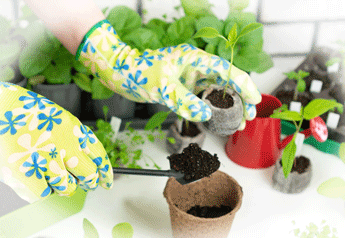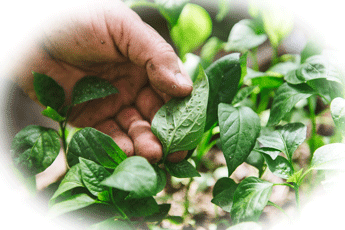Is this really necessary ?
There is a lot of debate about this. Some say that not removing the netting from peat pellets when potting on is necessary. Others disagree. Those for removing the netting say that not removing it impedes the seedlings’ growth. The theory seems to be that netting curtails the formation of the root ball. I am not convinced about that
My experience has been that it doesn’t make much difference at all. The roots grow through the netting, so I can’t see how this will happen. But I may have it wrong. So this year, I am going to try both methods. I want to make up my mind once at for all if it does make a difference. I will publish what I have decided in future posts.
In a previous post, I mentioned that I would be doing the second potting- on for some of my bigger seedlings. The seedlings were transplanted from 2-inch into 3-inch pots. With these pottings- on the netting was not removed from the pellets. Worse still, I didn’t altogether remove the seedlings from their first peat pots either. What I did do was to tear away the top part of the pot to just below the surface of the soil, before replanting the seedlings into the bigger pots. My theory is that because these pots are compostable, they will actually give the plant some nutrition whilst decomposing. It also makes potting on so much simpler. However, it does mean that if the view of not removing the netting is correct, I have really blown it. The roots will now have to grow through the mesh and the peat pots walls as well.
Let’s wait and see what happens. I don’t recall this having been a problem in the past, but maybe I will be proved wrong.
More on aphids
I declared war on Aphids in a previous post, as these nasty little critters have already shown their heads. Right now, because the seedlings are still relatively small, I am simply using my fingers to remove the aphids every couple of days.
When the plants get bigger, I will be trying a new method this year with the plants I keep under glass. I will be using Aphidius, which is a naturally occurring aphid parasite. What you apparently do is release these guys into your greenhouse. They will then actively seek out aphids and lay an egg in them. The egg hatches, and the resultant larva feeds on the aphid, in the process killing it. As soon as the larvae reach maturity, they turn into Alphidius wasps. These Alphidius wasps, in turn, will find more aphids. And so the cycle will continue. Temperatures apparently have to be an average of 10 degrees Celsius for this to work, so I will wait awhile before trying them
In a future postI will discuss the ways I will control aphids for the plants that will be going outdoors.
Never a dull moment when you are growing Chillies !
